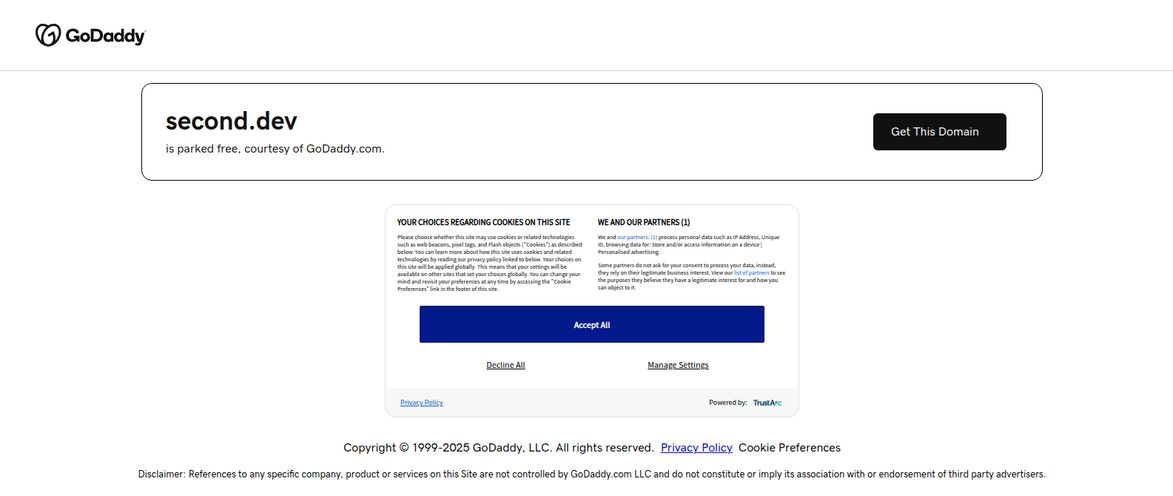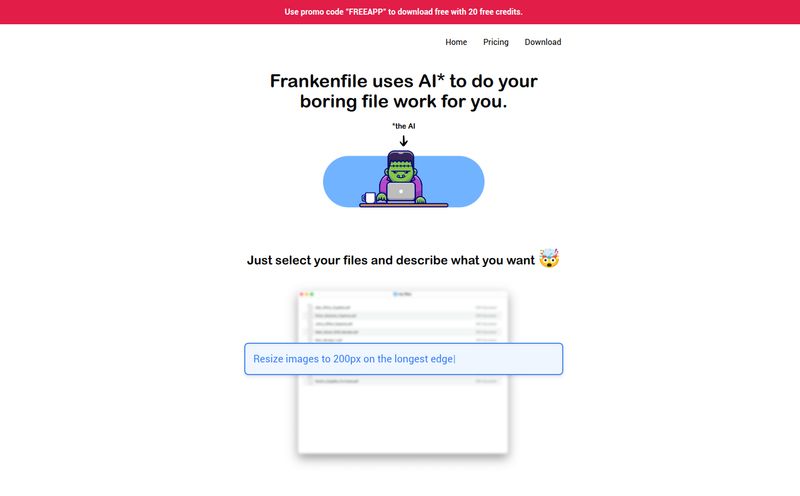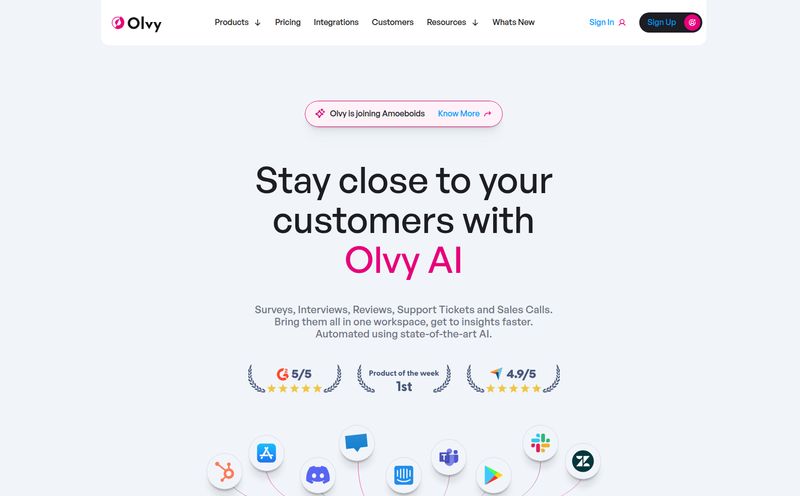If you’re in e-commerce, you know the deal. It’s a constant tightrope walk. On one side, you have a mountain of tickets, repetitive questions, and the pressure to respond instantly. On the other, you’re trying desperately to maintain a unique, friendly brand voice and make every customer feel special. It’s exhausting. And honestly, most days it feels like you need a clone army to keep up.
For years, the promised solution was “chatbots.” We all remember that wave, right? Clunky, script-reading bots that frustrated customers more than they helped. They could answer “what are your hours?” but would short-circuit if you asked anything slightly more complex. It left a bad taste in everyone’s mouth.
So when I started hearing the buzz about a new platform called Siena AI, described as an “autonomous customer service platform” with “human-like empathy,” I was skeptical. I mean, empathy? From an AI? It sounds a bit like marketing magic dust. But the claims were big—automating over 80% of daily interactions, insane boosts in response times, and happier customers. I had to see what was under the hood.
So, What is Siena AI, Really?
Okay, let's break it down. Siena isn't just another chatbot. That's the first thing to get straight. It's pitched as an agentic commerce platform. Fancy term, I know. In simple terms, think of it less like a pre-programmed robot and more like a highly-trained, lightning-fast apprentice for your customer service team. It’s designed specifically for commerce brands to handle the bulk of customer interactions across all your channels—email, chat, social media DMs, you name it.
The core promise is that Siena can understand the intent behind a customer's message, not just the keywords. It handles complex queries, juggles multiple issues in a single conversation, and does it all with a personalized, consistent brand voice. A voice that you define. The goal is to free up your human team from the repetitive stuff so they can focus on the truly complex, high-touch situations where a human is irreplaceable.

Visit Siena AI
The Features That Power the Platform
When you look at what Siena does, it's clear they’ve thought about the actual pain points of a growing e-commerce business. This isn't just a simple Q&A machine.
More Than a Bot: Empathic AI and True Personalization
This is Siena’s headline feature. The platform is built to deliver what they call “empathic AI customer service.” It’s trained to understand nuance, sentiment, and context. For example, it can differentiate between a customer who is slightly annoyed about a late shipment and one who is furious about receiving the wrong item entirely. It then tailors its response accordingly. It can pull from a customer’s order history to provide genuinely personalized support, making the interaction feel less transactional and more, well, human. It's the difference between a self-checkout kiosk and a helpful store clerk who actually remembers you.
All Your Conversations in One Place
One of the biggest headaches for support teams is channel-hopping. A customer sends a DM on Instagram, then an email, then starts a live chat. Keeping track is a nightmare. Siena’s omnichannel management brings all these conversations into a unified view. This ensures a consistent experience for the customer and a sane workflow for your team. The AI maintains the context of the conversation, regardless of where it’s happening. This is huge for maintaining a coherent brand presence.
Automating Workflows with AI Flows
This is where things get really powerful. Siena uses “AI Flows” to automate entire processes from start to finish. Think about common tasks like processing a return, changing a subscription, or applying a discount code. Instead of just giving the customer a link to an FAQ page, Siena can actually guide them through the process and execute the task right there in the chat. It can handle post-purchase complexities like “I want to start my return” and subscription management with an almost startling level of autonomy. This is what they mean by “agentic”—it doesn’t just answer, it acts.
The Good, The Bad, and The AI-Powered Reality
No tool is perfect, and as an SEO and traffic guy, I’ve seen my share of over-hyped platforms. So, let’s get real about the pros and the potential hurdles.
The upside is pretty compelling. The numbers from their site are eye-popping: a 98% faster response time and a 90% faster resolution time. For a customer, that’s the difference between a great experience and a frustrating one. This leads to what they claim is a 94.7% average CSAT score, which is nothing to sneeze at. When you reduce the workload on your human agents, they're happier, less burned out, and can provide even better service on the tickets they do handle. The testimonial from Jeremy Thurswell of /kit·sch/ calling it “the most powerful solution for AI customer service” carries some weight, especially from a brand that clearly values customer experience.
Now for the reality check. First, this isn’t a plug-and-play magic wand. There’s going to be an initial setup and integration period. You have to train the AI on your brand voice and connect it to your existing stack (like Shopify or Zendesk). Second, there's the risk of becoming too dependent on AI. While Siena can handle over 80% of interactions, you still need smart, capable humans to oversee the system, handle escalations, and monitor performance. This isn't a “set it and forget it” solution; it requires ongoing optimization to stay effective. Some might argue that leaning this heavily on AI erodes the genuine human connection, but in my experience, a fast, effective AI resolution is a thousand times better than a slow, frustrating human one.
Let's Talk Money: Siena AI Pricing
Ah, the question on every business owner’s mind. How much does it cost? Well, Siena doesn’t have a public pricing page with neat little tiers. I know, that can be a bit of a red flag for some. But for enterprise-grade software like this, it's pretty standard.
Their pricing is based on your specific needs, primarily your ticket volume and the size of your customer service team. The structure seems to have three main parts: a core Platform Fee for the AI engine and integrations, an Automation Pack fee that’s based on the number of automated tickets, and a Support & Implementation fee for getting you onboarded. To get a real number, you have to book a call with their team. It’s a “call us for a quote” model, which tells me its' aimed at serious, scaling brands who see customer service not as a cost center, but as a growth engine.
Who is Siena AI Really For?
After digging in, it's clear who stands to benefit most from Siena. This is for the direct-to-consumer (DTC) e-commerce brand that's hitting a growth spurt. You're probably on Shopify, using tools like Gorgias, Zendesk, or Intercom, and you're feeling the pain of scaling your support team. You’ve moved past the stage where the founder can answer every email personally, and you need a system that can grow with you without sacrificing the quality of your customer interactions.
If you're a small startup with very low ticket volume, this might be overkill. But if you're an established brand looking to improve efficiency and make your customers happier, Siena is definitely playing in the right ballpark.
My Final Take: Is Siena AI Worth the Hype?
So, do I believe in “AI empathy”? Not literally. An AI doesn’t feel. But Siena represents the next best thing: an AI that can simulate empathy so effectively that it results in a genuinely better, faster, and more personal customer experience. It’s a powerful tool that seems to deliver on its promise of autonomy.
I’ve always believed the best technology doesn’t replace humans, it elevates them. Siena AI appears to fit that mold. It’s not about firing your support team; it’s about turning them into customer experience specialists by automating the repetitive grind. For any e-commerce brand that’s serious about scaling, that’s a very exciting proposition.
Frequently Asked Questions about Siena AI
- 1. How much does Siena AI actually cost?
- Siena AI uses a custom pricing model. The cost depends on your monthly ticket volume and the size of your current support team. You'll need to contact their sales team for a personalized quote based on your business's needs.
- 2. Can Siena AI completely replace my human customer service team?
- No, and that's not the goal. Siena is designed to handle up to 80% of common customer interactions, freeing up your human agents. You'll still need people for complex escalations, strategic oversight, and to manage the AI platform.
- 3. What platforms does Siena AI integrate with?
- Siena integrates with a wide range of e-commerce and customer service platforms, including Shopify, Zendesk, Gorgias, Kustomer, Intercom, ReCharge, Gladly, and even offers custom app integrations.
- 4. Is Siena AI difficult to set up?
- There is an initial setup and onboarding process to integrate Siena with your systems and train it on your brand voice. However, Siena provides expert onboarding and support to guide you through the implementation.
- 5. What makes Siena different from a regular chatbot?
- The key difference is autonomy and complexity. A regular chatbot follows a rigid script. Siena is an “agentic” AI that understands intent, manages multi-part queries, and can independently execute tasks like processing a return or modifying a subscription, all while maintaining a human-like conversational flow.
Conclusion
The world of customer service is changing fast, and AI is at the wheel. Platforms like Siena AI are moving beyond the simple chatbots of yesterday and offering something far more integrated and intelligent. It's not a magic bullet, but for the right e-commerce business, it could be the key to scaling efficiently while keeping customers surprisingly happy. It proves that sometimes, the most human touch comes from a well-designed machine taking care of the boring stuff, so the real humans can shine.
Reference and Sources
- Siena AI Official Website: https://www.siena.cx/



